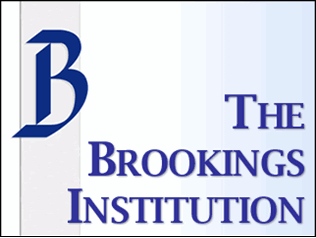 Like Lloyd Bentsen said of Dan Quayle in 1988, "I know the Talmud, I studied the Talmud, and the Brookings ConText site is no Talmud."
Like Lloyd Bentsen said of Dan Quayle in 1988, "I know the Talmud, I studied the Talmud, and the Brookings ConText site is no Talmud."The "Center for the Constitution" with the Brookings Institution presents online "James Madison's Notes of Debates in the Federal Convention of 1787" with commentary that can be augmented by users of the site.
The publishers of the site suggest that it is a lot like the Talmud.
From the American Interest blog: "The project, which aims to surround the notes themselves with columns of explanatory information, has a fascinating inspiration, explains Benjamin Wittes, Senior Fellow in Governance Studies at Brookings:
From the American Interest blog: "The project, which aims to surround the notes themselves with columns of explanatory information, has a fascinating inspiration, explains Benjamin Wittes, Senior Fellow in Governance Studies at Brookings:
There is a model for this sort of thing, but it’s not a model from the American constitutional tradition; it’s the Talmud—the multi-volume exposition of Jewish law that developed after the Romans sacked the Temple in Jerusalem. The Talmud is a series of debates—and commentaries on those debates—on a text called the Mishnah. …On a page of Talmud, a passage of Mishnah is physically surrounded by layers of commentary text, more and more of them as the centuries wore on. So in the center of the page is a short passage, by tradition, of course, Divine, but often in practice dry as dust; yet radiating out from that passage is centuries of wisdom and thought. It is not merely a form of crowd-sourced scholarship, but it is a visual means of expressing that scholarship and crowd-sourcing that seemed to me to have broad application to the exposition of lengthy and difficult historical texts like the Notes.No, we think all this is not Talmudic. The result as we see it on the site is an annotated text with two layers and five categories in separate note panes. The categories are:
H — Historical
E — Current Events
T — Theoretical/Philosophical
I — Constitutional Interpretation (this includes discussion of relevant court cases)
O — Other Commentary (also, when your particular column view does not show all available columns, commentary from “hidden” columns will appear in the “Other” pane)
These do not coincide, except in the most generic sense, with the Talmudic and halakhic modes of commenting on the Talmud text, which are not by the way "dry as dust".
And the two authority layers for comments at Brookings are contributors and scholars. Some unspecified people get Scholar-Level Access, "Approved scholars will also be granted advanced access to the site, which includes the ability to edit existing commentary. With scholar-level access, a pen icon will appear at the end of each note in the commentary panes. Click on the pen to edit text within each note." Ordinary Contributors cannot do that.
We wish the project luck, "as the centuries wear on" even if it is not Talmudic in any meaningful way. A truly open wiki-like effort would be much more welcome and more interesting to watch unfold. This looks like a pseudo "crowd sourcing" groupware effort that will be hampered, restricted and inhibited in any number of tangible ways.
Yet, as a post script, in one crucial high level way the ConText exercise and the Talmud are alike. Both are dedicated to providing life support or resuscitation for old documents to keep them alive so as to justify why things ought to stay the same as "we say" they always were because the old words (i.e., "as we interpret them") have special or even sacred meanings and great authority.
And the Brookings Institution is known both as liberal or conservative, depending on whom you ask. This ConText venture seems to us quite conservative, in that way yes, like the Talmud.
No comments:
Post a Comment